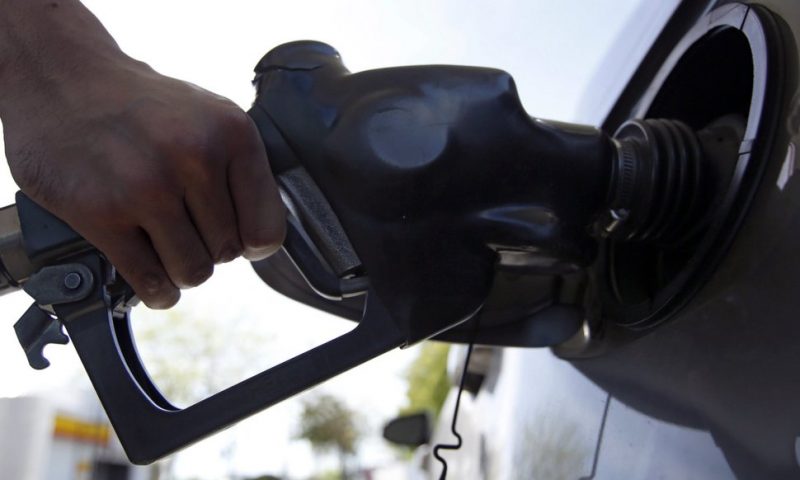Unrest, economic sanctions and infrastructure disruptions are crimping the world’s supply of oil – yet prices, rather than rising, remain far cheaper than anticipated.
LIBYA ON THE BRINK of collapse, political and economic turmoil in Venezuela, a pipeline contamination crisis in Russia, renewed economic sanctions on Iran, declining production in Mexico and Kazakhstan – a bevy of supply disruptions from North America to North Africa to Asia should be driving crude oil and gasoline prices to new highs, especially at the height of the U.S. summer driving season.
Yet while worldwide oil production was down 2% through the first quarter of this year from a recent peak of 84 million barrels per day last October, Brent crude oil – the benchmark for the global oil market – on Tuesday morning was a tepid $62, about $20 lower than last fall and just over half the peak reached in 2014. Prices last week even threatened to tumble into the $50s, rattling investors.
Whether the prices are a good thing depends on where you stand: President Donald Trump, for example, has repeatedly pressured Saudi Arabia to ramp up production to keep gasoline prices low. By contrast, some U.S. shale oil drillers, whose operations are costlier than conventional drilling, have struggled to stay afloat amid such cheap prices.
Either way, the swoon reflects how conventional concerns about what analysts like to call the “fundamentals” – the balance between supply and demand – are being overtaken by jitters about a potential market downturn.
“If you look at the oil market fundamentals, oil prices should be a lot higher than they are, but the market is very much focused on this impending economic doom that may or may not materialize,” says Ellen Wald, president of Transversal Consulting and a senior fellow at the Atlantic Council Global Energy Center. “The market is obsessed with economic indicators showing falling demand.”
Such concerns aren’t without merit: Analysts have long predicted that the U.S. trade war with China will eventually wreak economic havoc. Economists meanwhile have pointed to the inversion of the yield curve, a benchmark that illustrates the risk associated with certain U.S. Treasury bonds, which when swapped from an upward sloping curve to one that plunges downward – as occurred in March – is traditionally seen as portending an imminent recession.
Either development would cause a sharp drop off in demand quickly overtaken by a glut of supply.
“If demand growth weakens, we can easily slip back into an oversupply situation by the fourth quarter,” says Ann-Louise Hittle, vice president for oils research at the consulting firm Wood MacKenzie.
Even so, Brent prices, though notoriously difficult to predict, are about $10-15 lower than some analysts expect, at least according to one analysis by Wood MacKenzie. Barring any major economic calamities, the firm expects prices to climb into the low $70s by the end of the third quarter.
Underlying investors’ uncertainty is America’s new role as the world’s No. 1 oil producer: Although about 90 drilling rigs in the U.S. have gone offline since November, felled by the low price environment, output overall has continued to rise by 1.6 million barrels per day per year.
“There’s a realization that the U.S. is still growing strongly, and there’s a sense that, without demand growth, this could quickly tilt into oversupply,” Hittle says.
The U.S. produces a light, sweet variety of crude that differs from the declining supply of heavy, sour crude pumped by nations such as Iran, Libya and Venezuela. Unlike many other commodities, however, the oil market is highly fungible: One quantity of oil often easily replaces another, and refineries built to process heavy crude can, if needed, handle the light variety.
“It all comes back to shale: The shale productivity has been very good, and even though you’ve taken out 90 rigs or thereabouts, it’s still very good,” says Steven Kopits, managing director of Princeton Energy Advisors. “So right now people are presuming that shales are going to keep growing, and until that’s demonstrated to be false, people are going to assume that the U.S. will be able to produce an incremental increase in the amount of oil more or less infinitely.”
The development marks a remarkable shift from just five years ago, when “the U.S. wasn’t able to increase supply very much and no one was able to either,” Kopits says. A crash in prices in 2016, however, effectively forced U.S. drillers to make their operations far more efficient, causing costs to fall and output to rise.
“It’s a seismic shift,” Kopits says. “If you’re going to argue that shale is going to run out of firepower, the mentality right now is, ‘Show me that that’s true.’ And until we see that, people are going to be pessimistic about oil prices in general.”
Prices might still soar: If Iranian or Venezuelan production abruptly drops or another crisis causes a sudden crimp in supply or, alternatively, if trade tensions ease between the U.S. and China, Brent will likely climb. Wells Fargo Securities, for example, issued a report last week asserting that the connection between a recession and an inverted yield curve is weakening.
“This pessimistic mindset that seems to be in excess of fundamentals. If something changes in the mindset, you’d see material reversals,” Kopits says. “It could bounce up pretty fast.”

